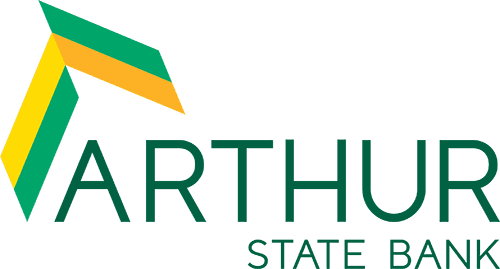The 2024 tax season is fast approaching, and even if your tax-filing deadline is months away, it’s never too early to start preparing for the must-tackle task.
Waiting until the last minute to get ready for filing, of course, can lead to unnecessary stress for taxpayers. In fact, according to a 2023 study, nearly half of American taxpayers report feeling stressed when they think about their taxes — but preparing in advance can ease the anxiety.
Ready to get your tax-filing preparation started? Looking for answers to commonly asked tax-related questions such as “What is the standard deduction for 2024?” and more? To help you get ready (and cut the tension that tax-season procrastination can bring), we’ve put together the following guide to preparing for the upcoming 2024 tax season.
2024 tax deadlines
For most American taxpayers, the 2024 tax season concludes on April 15, 2024, when the vast majority of returns are due to be submitted to the Internal Revenue Service (IRS). And to help you prepare for your filing, the IRS offers a range of taxpayer resources and tips on its website.
While April 15 is the latest date for most taxpayers who owe taxes to file without facing the possibility of a penalty, the IRS typically begins accepting returns as early as late January. Of course, filing early can bring substantial benefits — it can not only help lower your stress levels, but also set you up for quicker IRS processing and an earlier receipt of your tax refund (if one is due).
Those who file for an extension are given six additional months (until October 15, 2024) beyond the April 15 deadline to file their completed tax returns. Extending the filing deadline, though, does not mean the payment deadline is extended. If taxpayers believe they owe taxes, they must estimate the amount owed and pay it when submitting their extension form.
Free options for filing taxes
An estimated 100 million American taxpayers are eligible to file their tax returns free of charge, and the options for doing so include:
- Free, in-person tax preparation (for those who qualify): For those who meet specific eligibility requirements and need assistance preparing their tax returns, the IRS’s Volunteer Income Tax Assistance (VITA) and Tax Counseling for the Elderly (TCE) programs, along with the AARP Foundation’s Tax-Aide program, provide free, in-person tax-filing help from IRS-certified tax preparers. (Requirements include having an annual income of generally $60,000 or less, having a disability, possessing limited English-speaking skills or being age 60 or older. Check the links above to see full eligibility requirements.)
- Free remote, full-service tax preparation: Those who meet specified income requirements can get free remote tax-preparation help from IRS-certified volunteers via the United Way’s MyFreeTaxes program (for filers who make about $60,000 or less annually) or the IRS’s GetYourRefund program (for filers who make $66,000 or less annually).
- Free self-service tax preparation: Filers who make $73,000 or less annually may be eligible to use the IRS Free File program to prepare and submit their tax returns using guided, online tax-preparation software.
- Free filing for service members: Qualifying members of the military and their family members who meet specific requirements can file their taxes for free with the help of software or one-on-one help through the MilTax program.
5 basic steps to tax-filing success
While the tax-filing process can vary from person to person, in most cases, it generally involves the following five steps — and is much easier if you’re prepared with the right documents and information in hand:
-
Gather the needed documents and information:
The various forms and details needed for tax filing typically include:
– Proof of identity
– Personal details like the Social Security numbers and birthdates of immediate family members
– Income and investment information such as your W-2 form(s), which is typically provided by the taxpayer’s (or taxpayers’) employer(s) and shows the filer’s (or filers’) income over the tax year; information about any contributions to retirement accounts; information on any educational expenses paid such as those for tuition and textbooks; documentation on any payments made to student loan debts and/or a home mortgage; any 1099 forms provided for income earned beyond wages, salaries and tips; and documentation regarding any other income such as award money and gambling winnings
– Information on any medical expenses paid over the course of the tax year
– Documentation of health insurance coverage (Form 1095, typically provided by employers)
– Documentation of any Social Security benefits claimed over the course of the tax year
– If applicable, documentation of any self-employment information such as business expenses and income, mileage records, any installments already paid on a tax bill, and details on the size of any in-home working space if you plan to take a home office deduction
– Donation receipts for taxpayers looking to claim a tax deduction for charitable donations
– Details on any already-paid taxes such as property taxes, as well as any state and local income taxes paid on personal property such as a new vehicle
– Details on any foreign bank accounts the taxpayer(s) may hold and their peak values over the course of the tax year
– Additional information such as routing and account numbers for those seeking to have their tax refunds sent via direct deposit -
Make your deduction decision:
You’ll need to decide whether to take the standard tax deduction or itemize your tax deductions. (Find more information on this item below.)
-
Choose whether you’ll be filing online or in-person with a tax preparer.
-
Complete the required tax forms.
-
Lastly, submit your completed return.
This can be done using tax-preparation software or via an IRS-authorized e-file provider. Returns can also be submitted by mail, but this method is not encouraged, as it can take several weeks longer to process and can substantially delay the issuance of any tax refund owed.
Understanding the top tax deductions and credits
Some of the most common tax deductions and credits that taxpayers and tax preparers can use to lower a filer’s tax liability and/or debt include:
- The standard deduction: Available to most taxpayers, this type of deduction can simplify the filing process by offering a specified deduction in taxable income based on the taxpayer’s (or taxpayers’) annual earnings. (The tax year 2023 standard deduction is $13,850 for single filers, $20,800 for heads of household or $27,700 for joint filers.)
- Homeownership deductions: These deductions available to homeowners offer a reduction in taxable income for any mortgage interest and property taxes paid.
- Healthcare-related deductions: Available to taxpayers whose healthcare costs exceed a certain percentage of their adjusted gross income, these deductions are available for such expenses as physician visits, qualifying medical procedures and prescription medications.
- Education-related credits: Offered to students in an effort to reduce the hardship of pursuing a higher education, these credits offer tax benefits for qualifying education-related expenses such as tuition, as well as course materials such as textbooks that had to be purchased. Benefits are also available to offset the education-related expenses of those who pursue lifetime learning opportunities.
- The Earned Income Tax Credit (EITC): Geared toward taxpayers with low to moderate annual incomes, this credit can substantially reduce the tax debt owed (or even qualify the recipient for a refund) and is meant to boost the financial well-being of the taxpayer.
- The Child Tax Credit: This credit offers a reduction in taxes owed for each qualifying child in the taxpayer’s household. It is meant to recognize the financial responsibilities that come with raising children.
- The Child and Dependent Care Credit: This credit, available to taxpayers covering the costs of childcare while working or looking for a job, is meant to acknowledge the financial challenges of balancing career and family responsibilities.
Note: This article is designed to be a primer for taxpayers looking to prepare for the 2024 tax season — it’s by no means meant to offer advice or be a comprehensive guide to preparing or filing your taxes. If you have questions about how you should proceed with any of your tax-filing decisions, be sure to consult a professional.
Proudly serving South Carolina since 1933, Arthur State Bank offers accounts and services to meet a variety of financial needs. To help you achieve all your financial goals, the bank offers in-person service as well as a range of convenient digital solutions. To learn how Arthur State Bank can help you with banking needs ranging from checking and savings to retirement accounts, mortgages, other personal loans and more, visit arthurstatebank.com.






















